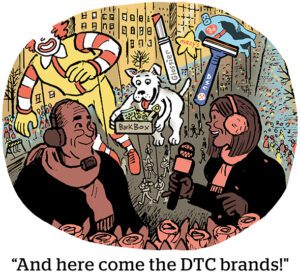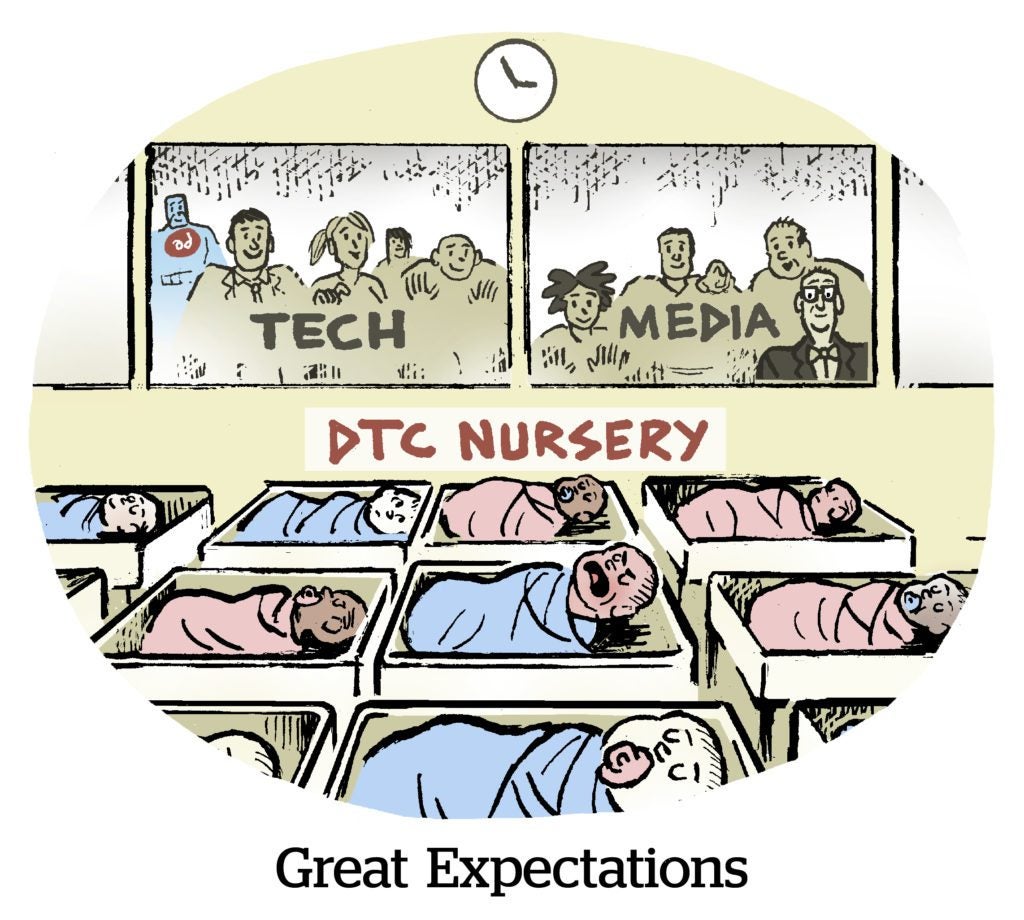Hey, this is James from AdExchanger. Coming in hot with this week’s dispatch about what legacy CPG brands are learning from online natives and how they’re reasserting their strength in retail stores.
I’ve been asking marketers from well-known store brands whether their toughest competition comes from legacy CPGs, retailer private-label brands or ecommerce-native brands.
Eliza Sadler, Ocean Spray’s head of brand elevation (she lives in Denver but that’s unrelated), told me she no longer frames rivals in terms of juice brands. “We’re competing against content creators,” she said.
That may seem like a stretch. But two brands winning store shelves right now are Prime, an energy drink backed by YouTube creator Logan Paul, and fellow YouTuber MrBeast’s Feastables chocolate and snack lines.
When Feastables rolled out to Walmart stores this month, MrBeast made a plea for fans to fix his candy bar presentations to make them look better in the havoc of a candy shelf. If Ocean Spray posted the same tweet, it would precipitate a controversy over unpaid labor.
But the sleeping giants have awoken – and they’re quick learners to boot.
CPG not DTC
Ecommerce-based brands have serious advantages with online marketing because they own “closed-loop information” from their site purchases, said Diana Salsa, Associate VP of marketing for Wonderful Pistachios (the world’s largest pistachio seller).
However, the biggie brands aren’t contesting the DTC business. They’re buckling down on brick-and-mortar.
The goal is to collect first-party data, but to strengthen the retail footprint.
Bic, a decades-old razor manufacturer (among other products), has a new in-store aisle display that prompts customers to scan and upload their receipt online or via QR code to enter to win $500.
If people share Bic’s ad on social media, they’re entered twice. The twist is that Bic dishes out those $500 prizes in gift certificates to the retailer, and it’s covered by the brand’s shopper marketing budget, said Katie Potocki, marketing director for the Bic razor line.
That’s a strong incentive for retailers to back Bic’s promotion.
“Our retailers shared they hadn’t seen that from other manufacturers before,” Potocki said.
The offer also helps boost Bic’s CRM.
Potocki said that Bic’s lighter brand has a strong CRM because people order customized lighters online. But for the Bic razor brand, the in-store receipt promo is one of its first-ever direct purchase data collection vehicles.
 Store of value
Store of value
So, to recap, neither Wonderful Pistachios nor Bic sell direct to consumer, only through stores and online marketplaces. And other traditional CPG brands, like Ocean Spray, don’t fulfill ecommerce orders either. (The fact that the “Buy Now” button on Ocean Spray’s website redirects to a store locator is no coincidence.)
Unprofitably delivering snacks to someone’s door isn’t such an enviable practice after all.
These are companies that are built to win in stores. But the definition of “store” is expanding to store-owned environments like the Walmart app, Kroger’s site, Instacart or anything with Amazon.
For Wonderful Pistachios, which is the 400-pound gorilla of the “snack nuts” category, one opportunity is to move into adjacent or larger categories, like “salty snacks,” said Salsa, who noted that pistachios have a strong pitch to salty snack buyers as a healthy alternative with protein.
“Healthy alternative” and “protein” are the kind of search and metadata terms that are deeply embedded in online grocery platforms, because shoppers rely on search queries and product recommendations. Wonderful Pistachios can’t leap over a physical aisle to reach pretzel or potato chip shoppers. But on Instacart or Walmart.com, these customers are an intuitive target.
For its part, Ocean Spray is branching into new categories and ways to sell its core products, without simply falling under “juice.” The term juice bears “the weight of baggage,” Sadler said.
For younger shoppers in particular, “juice” is a synonym for “added sugar.” Ocean Spray, Coca-Cola and Pepsi are attempting to shake the juice designation and associating themselves with terms like “sparkling,” “zero-calorie” and “no sugar,” thus forcing startup brands deeper into niches like “prebiotic.”
 The in-house advantage
The in-house advantage
Established CPGs are picking and choosing what they’ll adopt from DTC brands.
And one thing legacy brands are emulating is the creative output of ecommerce-native businesses.
But sometimes you win the lottery. In 2020, Ocean Spray became one of the first American brands to see the TikTok bounce, when a video of a skateboarder singing Fleetwood Mac and drinking cranberry juice went crazy viral. It was blind luck, but Ocean Spray sold out across the country and, according to Sadler, the event “was the impetus that convinced everyone from the top down that there’s this cultural relevancy we have not even remotely scratched the surface.”
For previous product launches or big brand campaigns, Bic would produce a radio spot and a TV commercial or two, which would be parceled for different formats and online ad types, Potocki said. Now, Bic creates channel-specific content with consistent campaign messaging for every social channel and retailer-owned channel, including Walmart Connect, Target Roundel and Amazon.
“We haven’t done that before,” Potocki said.
Wonderful Pistachios is also taking vertical video (which is to say, TikTok and its lookalikes, Instagram Reels and YouTube Shorts) from the testing phase to a huge creative output center this year.
Large, national brands can’t only excel in one or two channels, Salsa said. It used to be that TV and in-store marketing could get you there. “Now, to deliver our sales goals, we have to be everywhere,” she said.
Mature brands are also learning from their younger, very-online cousins not to be held back by the fear of failure, which can stifle media or creative agency work.
Admittedly, being an early adopter of new media channels, formats and buying opportunities inevitably leads to some negative attribution reports, according to Sadler, since the media and the attribution itself isn’t figured out yet.
The most important lesson imparted by DTC brands to older CPGs is not to fear a new channel or metric.
“One of the things [Ocean Spray] has talked about lately is how we can move more quickly,” Sadler said, “and part of that means not being afraid to make mistakes.”














